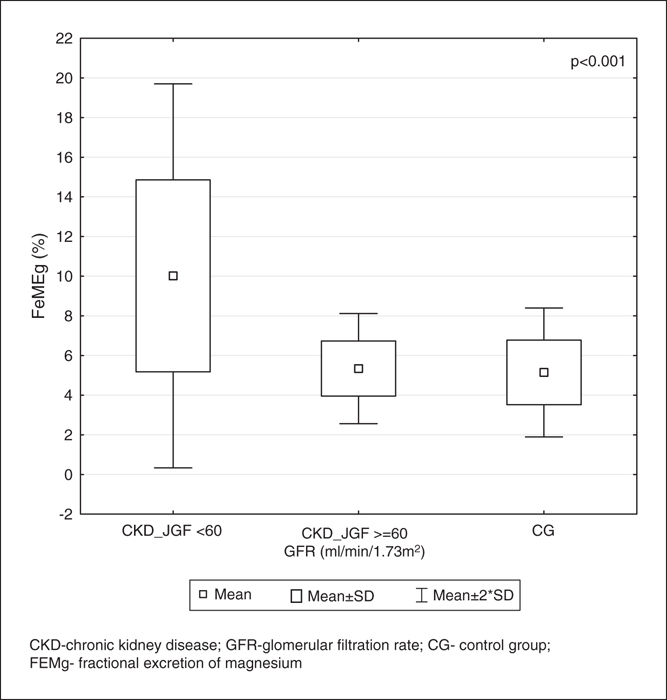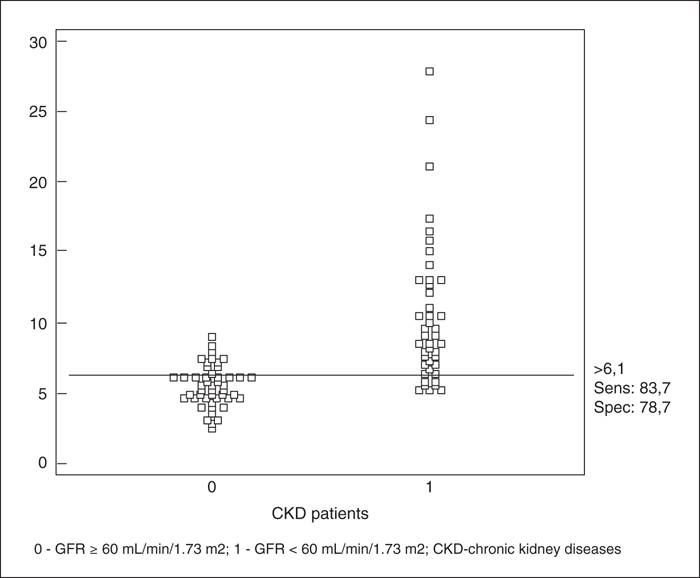Magnesium Research
MENUFractional excretion of magnesium and kidney function parameters in nondiabetic chronic kidney disease Volume 31, numéro 2, April-May-June 2018
- Mots-clés : Chronic kidney disease, Effective renal plasma flow, Fractional excretion of magnesium, Glomerular filtration rate, Kidney function
- DOI : 10.1684/mrh.2018.0437
- Page(s) : 49-57
- Année de parution : 2018
Aim:Elevated fractional excretion of magnesium (FEMg) is a noninvasive biomarker of kidney damage, but its association with kidney functional parameters in nondiabetic chronic kidney disease (CKD) patients has not been sufficiently explored thus far. Methods:We enrolled 111 adult patients with nondiabetic CKD and 30 controls. To precisely investigate kidney function, the following parameters were assessed measured glomerular filtration rate (mGFR), effective renal plasma flow (ERPF), Cystatin C, albuminuria, and fractional excretion of magnesium (FEMg). All the CKD patients were divided into two groups according to the values of mGFR (mL/min/1.73m2): the first group consisted of those with GFR≥ 60 mL/min/1.73m2, whereas the second group included those with GFR< 60 mL/min/1.73m2. Results:FEMg (%) was significantly higher in the group of nondiabetic patients with CKD compared to the healthy subjects [6.3 vs. 5.3 %, P=0.013]. There was also significant difference in the value of FEMg between the first and second groups of CKD patients. Increased FEMg was significantly correlated with all the investigated kidney function parameters, mGFR, ERPF, Cystatin C and albuminuria (r=-0.62; r=-0.60; r=0.77; r=0.39; p<0.01 for all). In multiple regression analyses based on observed parameters of kidney function, only cystatin C was independently and significantly associated with FEMg (multiple correlation coefficients: 0.738, p < 0.001)). Nondiabetic CKD patients with GFR< 60 mL/min/1.73m2 have increasedFEMg above 6.1% with 78.7 % specificity and 83.7% sensitivity. Conclusion:Highly significant association between kidney functional parameters and FEMg may indicate significance of this parameter in clinical practice.



